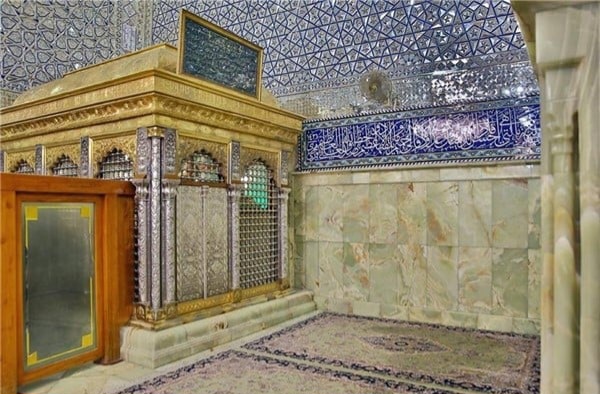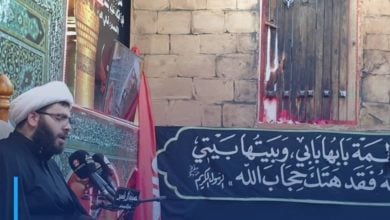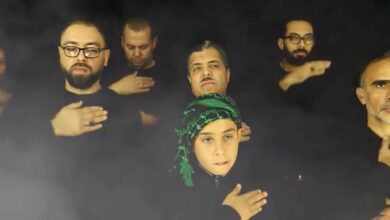14th of Rabi al-Thani marks anniversary of al-Mukhtar al-Thaqafi’s uprising

The 14th of Rabi al-Thani marks the anniversary of al-Mukhtar al-Thaqafi’s uprising, which took place five years after the event of Ashura, demanding the blood of Imam Hussain and the martyrs of Karbala.
He killed many of the murderers of the martyrs of Karbala and perpetrators of this tragedy, which pleased the Holy Imams (peace be upon them).
Grand Ayatollah Seyyed Sadegh al-Hosseini al-Shirazi recently said in one of his scholarly meetings that: There are different narrations about al-Mukhtar and his uprising, both in favour and against him. All of them are either Mursal or Weak Hadith, those that indicate al-Mukhtar as a good person as well as those which portray him as evil.
His Eminence continued: the Late Grand Ayatollah Seyyed Mohammad al-Shirazi has written a small book and a pamphlet about al-Mukhtar’s personality, stating his opinion that al-Mukhtar was a good person and his actions were correct. So, if those interested refer to this book, they will find good information.
Al-Mukhtar bin Abi Ubaid al-Thaqafi was known by the kunya Abu Ishaq and nickname Kaysan. His father, Abu Ubaid, was one of the great companions of the Holy Prophet, who was killed in the Battle of Jisr, one of the battles of Qadisiya during the rule of the second self-claimed Caliph. His mother was Dume Bint Amru bin Wahb, who is described by Ibn Tayfur as one of the most eloquent women.
His uncle Saad bin Masoud al-Thaqafi was the governor of Mada’in appointed by Amir al-Momineen, peace be upon him.
Al-Mukhtar was born in the first year of Hijrah. There is no reliable information about his childhood and most of the information that is available about him is related to the uprising and demanding the blood of Imam Hossein, peace be upon him. So, there are few narrations about his personal life.
During the sacred move of Imam Hussain, peace be upon him, when Muslim bin Aqeel entered Kufa, he settled in al-Mukhtar’s house and then moved to the house of Hani bin Urwa. Al-Mukhtar was imprisoned due to cooperation with Muslim and opposition to Ubaidullah bin Ziyad, and so during the tragedy of Karbala, he was in Kufa in Ibn Ziyad’s prison.
Al-Mukhtar entered Kufa in 64 AH and asked the Shiites and seniors of the city to help him to avenge the blood of the martyrs of Karbala, which led to his arrest for a second time.
Before his arrest, he cooperated with the leaders of Tawabin, including Sulaiman bin Surad al-Khaza’i in their fight against the perpetrators of the tragedy of Karbala, but at the time of their uprising, he was in ibn Zubair’s prison. After the martyrdom of Tawabin, al-Mukhtar contacted some of the remnants of the group from prison in preparation for his uprising.
After his release from prison, al-Mukhtar began to reorganize the Shiites and those demanding the blood of Imam Hussain (peace be upon him). His invitation also reached the people of Basra, and a large number of Shiites from this city joined his cause.
Many Shia leaders, including “Ibrahim bin Malik al-Ashtar al-Nakhai” joined and strengthened his military power and resources. When the circumstances were right, al-Mukhtar, along with Ibrahim bin Malik al-Ashtar and other leaders of the movement decided to launch the uprising on the night of Thursday 14th of Rabi al-Awwal in the year 66, and take over the government of Kufa.
The revolutionaries of Kufa expanded their movement with the slogan “Ya Letharat al-Hussein”, and with the defeat of their enemy, they took over the government of Kufa and expelled the representative of Abdullah bin Zubair.
Al-Mukhtar’s followers, who were generally loyalists and Iranians living in Iraq and Shiites and lovers of the Ahl al-Bayt, peace be upon them, gained control over parts of Iraq in a short period of time, and many of the nobles of Kufa pledged allegiance to him.





